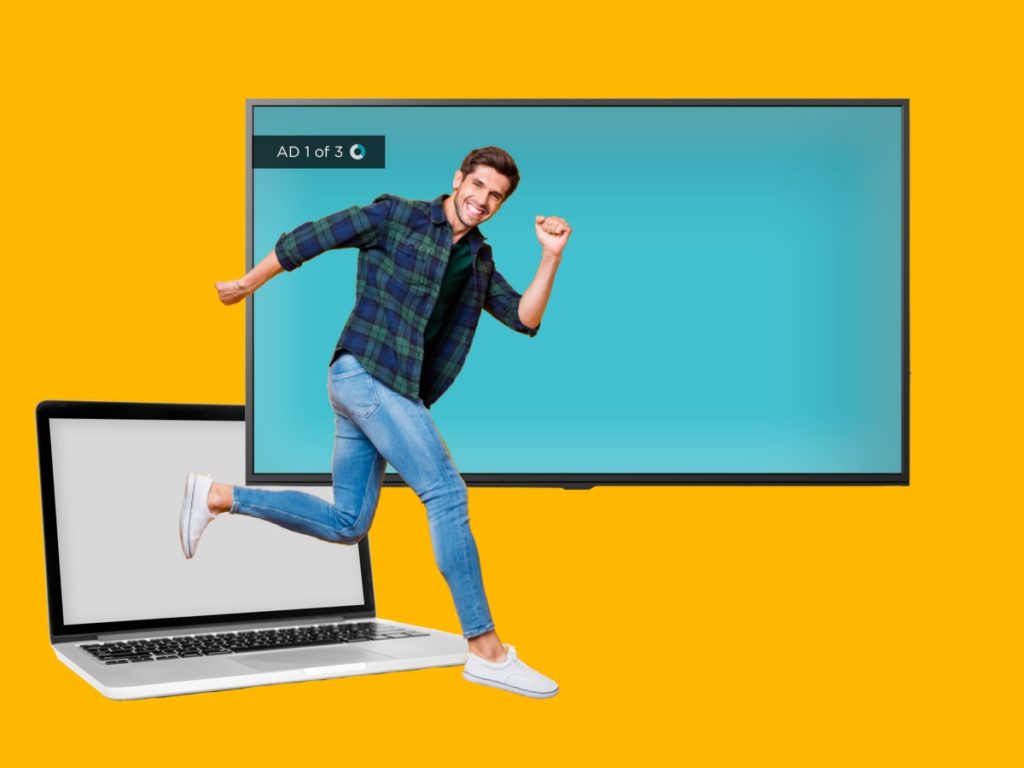
5 Min Read
Hooman Javidan-Nejad joined Ascent to discuss a topic that he, as a marketer, is passionate about–the best ways for paid search marketers to get started advertising on Connected TV. Javidan-Nejad will be the first to tell you that while your paid search campaign is great at capturing demand, it’s essential to also create more demand, which is where CTV excels.
“When you hear paid search–it’s just a text ad activated on Google and Connected TV advertising is a video creative on TV so you might think that these two channels have nothing in common, but you will be surprised at how many similarities there are between these two channels” Javidan-Nejad said. He highlighted that while many B2B advertisers think that CTV isn’t the platform for them, it can actually meet their needs. From precision targeting of B2B audiences, easily access to measurement, and video solutions that won’t break the bank, CTV is an essential space for B2B advertisers and there are key best practices you can borrow from your paid search campaigns.
According to eMarketer’s projection, B2B digital ad spend is expected to plateau. While B2B saw the expected dip during 2020, growth of spend returned in 2021 at an increase of 11.2%, but is expected to only grow another 0.8% by 2023. The reason being that B2B marketers are reaching a plateau across the ad channels that they are using today. “Let’s be honest, if you’re a B2B marketer, you’re doing a ton of paid search, probably spending most of your ad dollars on paid search because it works….Then, everyone is doing the same thing–whitepaper downloads, webinars, thought leadership pieces and all that. So once B2B marketers and advertisers reach a level that exhausts those channels and opportunities, then there is no way to scale….” Javiden-Nejad said. CTV then becomes an essential tool to generate demand.
7 Best CTV Practices to Borrow From Your Paid Search Campaigns
Javidan-Nejad then outlined 7 key best practices that search marketers can apply to their CTV campaigns.
- Create a Sophisticated Campaign Structure: Javidan-Nejad has an easy tip to setting up your first CTV campaign – follow the same layout that you’re using for your search campaign. “A successful connected TV advertising ad account is not the one that has just a single campaign that is dedicated to prospecting…you need to be really comprehensive.” He highlights that each stage of the funnel can be reached on CTV. The top of the funnel can be reached with prospecting, while mid-funnel can be reached with CRM, and lower-funnel with retargeting. B2B advertisers should look to organize their campaigns by audiences, budgets, and creatives to maximize performance and align with various goals.
- Optimize Your Budget: The next best practice can help you make the most of your ad budget. “Paid search works–the problem is B2B advertisers who are overdoing this channel,” Javidan-Nejad notes. Rather than going broad to try to break out of plateaus, he suggests you reallocate your budget away from poor performing keywords to CTV where it can be more effective. On CTV, you can help bust out of a plateau by generating new demand on the largest screen in the house and then capturing those users through paid search as they turn to their second device, such as a cellphone or tablet, to explore further and eventually convert. CTV and paid search work hand in hand to first generate, then capture demand.
- Use Your Existing Keyword Targets: Speaking of keywords, Javidan-Nejad recommends using your same keyword targets. For prospecticing, keep it broad to drive volume and reach those 3rd-party audiences. CRM allows you to upload your data for account based marketing targeting and as you move down the sales funnel, you can retarget site visitors to get them to convert.
- A/B Test to Find What Works: “As performance marketers and search marketers, we all love A/B testing,” Javidan-Nejad highlighted. Similar to how you test your ad copy, landing pages and bid strategies for paid search, CTV also supports a testing-focused approach. Look to test both creatives and audiences via campaign segmentation.
- Make Relevancy a Key Component: Javidan-Nejad mentioned that he knows the obsessions with ad scores since he has them himself. Just like paid search’s ad scores, relevancy is important across CTV. He recommends that your video creative, ads on a secondary screen, and landing page experience all align to make sure that the messaging is clear.
- Maintain Brand Safety: One thing paid search marketers love is the brand safety that comes with it. Google isn’t looking to damage your brand, Javidan-Nejad pointed out. Luckily, the same applies to CTV. “When you go live on CTV, it’s a brand safety haven,” Javidan-Nejad said. Your CTV ads should run on premium inventory such as ESPN or Discovery, not YouTube or the Belly Dancing Channel. Plus, the inventory should be non-skippable so your full message is received.
- Remove Creative Barriers: “This possibly is one of the biggest barriers that a lot of my fellow B2B marketers have when they think about B2B advertising,” Javidan-Nejad noted. But you don’t have to be limited here by lack of creative. He suggested looking to using the same video assets you use across your social channels, such as LinkedIn, to get started on CTV. If that’s not available to you? Check out a solution like Quickframe. “You don’t have to deal with any creative agency or media agency” to get the video creative you need to run in CTV, he concluded.
Watch the Full Webinar
To hear more of Javidan-Nejad’s insights on the best ways to make the jump from paid search to CTV advertising, be sure to check out the full webinar here.
